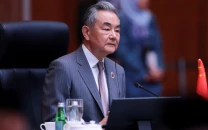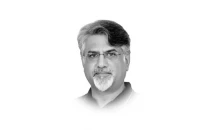Rekindling trust
US-Pakistan CT ties mature, seen in ISIS-K mastermind’s arrest and rising trust between partners

In a world where alliances are increasingly transactional, the counterterrorism partnership between Pakistan and the United States remains an evolving, if at times uneasy, example of strategic necessity. Whereas public discourse is usually preoccupied with episodes of tension (drone attacks, trust gaps and changing regional priorities), the cooperation, particularly in recent years, has become increasingly professional, mature and outcome-oriented. With old threats being replaced by new ones, the US-Pakistan counterterrorism (CT) cooperation is important not only to South Asian stability, but to world security architecture as well.
A recent example of this longstanding collaboration was the January 2025 joint operation that resulted in the arrest of Sharifullah, the ISIS-K mastermind of the lethal August 2021 Kabul airport bombing. Not the arrest but the manner in which it was done was important. The Pakistani intelligence services, working in close liaison with their US counterparts, monitored then captured a high-value target without incurring political blowback and without leaking the operation. This achievement, which was celebrated by the US Department of Justice, was not so much about symbolism but rather competency, coordination and trust.
And this trust seems to be on an upward curve. Centcom Commander Gen Michael Kurilla, who has retired recently, praised Pakistan as a "phenomenal partner" in the war against ISIS-K in July 2025, and was himself honoured with the Nishan-e-Imtiaz, the highest military award of Pakistan. This act, however ceremonial, amounts to a conscious resetting of relations — a shift in the mode of suspicion to a mode of common strategic outlook.
But what has changed?
To begin with, the two countries have apparently adjusted expectations. The pre-9/11 doctrine of "with us or against us" that previously put a strain on bilateral relations has been replaced by a more realistic, decentralised system of collaboration. Examples of this change include institutions such as the National Intelligence Fusion & Threat Assessment Centre (NIFTAC), in Pakistan, which is a locally based response that is integrated with international cooperation, especially with the American and allied intelligence organisations.
Second, terrorism as such has evolved. The recurrence of Taliban in power in Afghanistan has formed new security gaps, and these gaps are easily taken advantage of by groups such as Tehrik-e-Taliban Pakistan (TTP) and ISIS-K. They are not local actors only but transnational ones that recruit and fund globally. That is why the US not only requires Pakistan as a geographic ally but also as an operational one. Drones cannot do away with ideological insurgencies, they require boots on the ground, informants on the field and information provided by local agencies.
Of course, the road ahead is not without bumps. The perennial issue of strategic mistrust, particularly when it comes to Afghanistan and regional power dynamics with India and China, will always shadow Pak-US ties. Moreover, Pakistan faces internal political instability and resurging domestic militancy, which can dilute the focus of its CT machinery. But to let these obstacles overshadow progress would be short-sighted. It is also crucial that this partnership does not become overly securitised. Counterterrorism cooperation should be complemented by economic and developmental collaboration, particularly in Pakistan's tribal and border regions.
Ultimately, Pak-US CT cooperation is not a vestige of a long forgotten war-on-terrorism; it's a living, breathing necessity shaped by evolving threats and mutual dependencies. If 2025 is any indicator, it seems both sides have begun to move past suspicion and toward strategic maturity. For a world teetering on new fronts of asymmetric warfare, it's not just reassuring — it's essential.
















COMMENTS (1)
Comments are moderated and generally will be posted if they are on-topic and not abusive.
For more information, please see our Comments FAQ